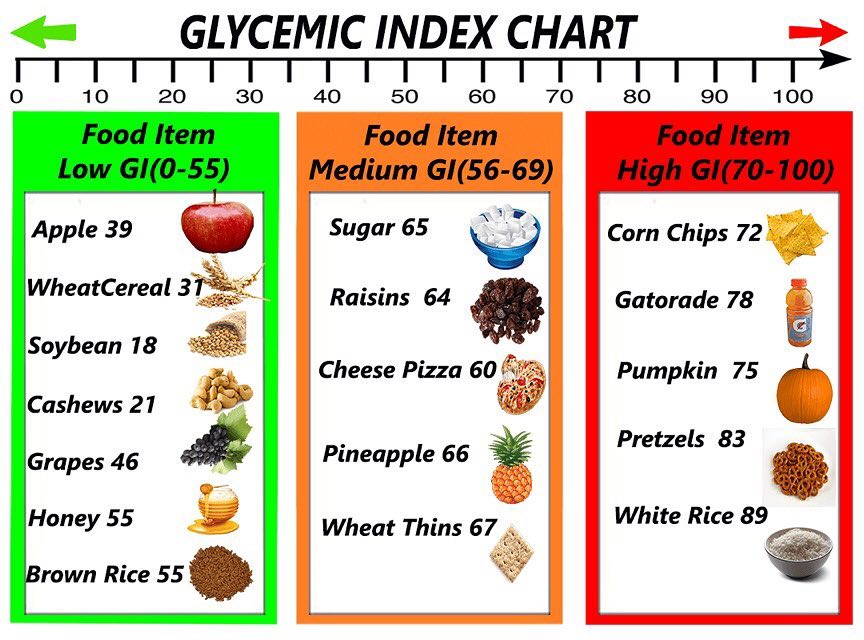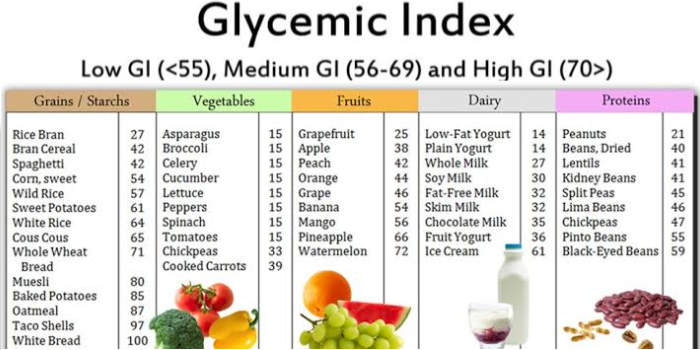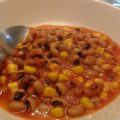The glycemic index (GI) is a scale from 1–100. Each food fruit get a score, and the lower the score, the longer that food takes to raise a person’s blood sugar levels.
The low glycemic (low GI) food list is based on the concept of the glycemic index (GI). Studies have shown that the low GI foods may result in weight loss, reduce blood sugar levels, and lower the risk of heart disease and type 2 diabetes.
A low-glycemic diet can help you control your weight by minimizing spikes in your blood sugar and insulin levels. This is particularly important if you have type 2 diabetes or at risk of developing it. Low-glycemic diets have also been linked to reduced risks for cancer, heart disease, and other conditions. Eating two servings of fruit and three servings of vegetables every day is the right mix for longevity, according to a large new study from researchers from Harvard T. H. Chan School of Public Health.
According to Healthline, are plenty of healthy and nutritious foods we can choose from, here is a list of the best low glycemic food:
- Bread: whole grain, multigrain, rye, sourdough
- Breakfast cereals: steel cut oats, bran flakes
- Fruit: apples, strawberries, apricots, peaches, plums, pears, kiwi, tomatoes, and more
- Vegetables: carrots, broccoli, cauliflower, celery, zucchini, and more
- Starchy vegetables: sweet potatoes with an orange flesh, corn, yams, winter squash
- Legumes: lentils, chickpeas, baked beans, butter beans, kidney beans, and more
- Pasta and noodles: pasta, soba noodles, vermicelli noodles, rice noodles
- Rice: basmati, Doongara, long grain, brown
- Grains: quinoa, barley, pearl couscous, buckwheat, freekeh, semolina
- Dairy and dairy replacements: milk, cheese, yogurt, coconut milk, soy milk, almond milk
The following foods contain few or no carbs and therefore don’t have a GI value. These foods can be included as part of the low GI diet:
- Fish and seafood: including salmon, trout, tuna, sardines, and prawns
- Other animal products: including beef, chicken, pork, lamb, and eggs
- Nuts: such as almonds, cashews, pistachios, walnuts, and macadamia nuts
- Fats and oils: including olive oil, butter, and avocado
- Herbs and spices: such as garlic, basil, dill, salt, and pepper.
How to use low-glycemic to boost your health
The eight principles of low-glycemic eating according to Harvard Health are:
- Eat a lot of non-starchy vegetables, beans, and fruits such as apples, pears, peaches, and berries. Even tropical fruits like bananas, mangoes, and papayas tend to have a lower glycemic index than typical desserts.
- Eat grains in the least-processed state possible: “unbroken,” such as whole-kernel bread, brown rice, and whole barley, millet, and wheat berries; or traditionally processed, such as stone-ground bread, steel-cut oats, and natural granola or muesli breakfast cereals.
- Limit white potatoes and refined-grain products, such as white breads and white pasta, to small side dishes.
- Limit concentrated sweets—including high-calorie foods with a low glycemic index, such as ice cream—to occasional treats. Reduce fruit juice to no more than one-half cup a day. Completely eliminate sugar-sweetened drinks.
- Eat a healthful type of protein, such as beans, fish, or skinless chicken, at most meals.
- Choose foods with healthful fats, such as olive oil, nuts (almonds, walnuts, pecans), and avocados, but stick to moderate amounts. Limit saturated fats from dairy and other animal products. Completely eliminate partially hydrogenated fats (trans fats), which are in fast food and many packaged foods.
- Have three meals and one or two snacks each day, and don’t skip breakfast.
- Eat slowly and stop when full.
You can download this low glycemic index foods list pdf and meal plan
Low Gylcemic Meal planning







